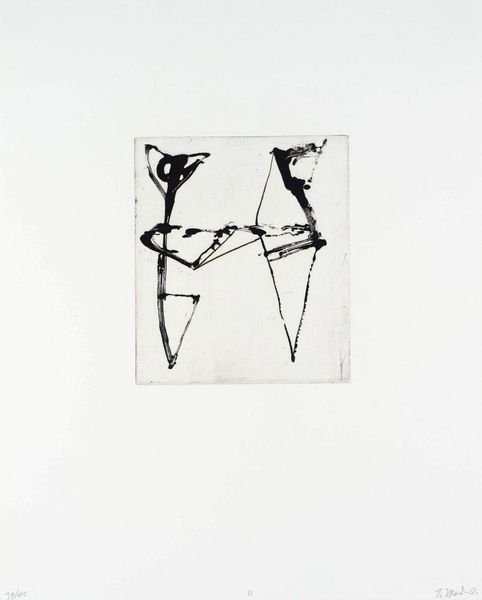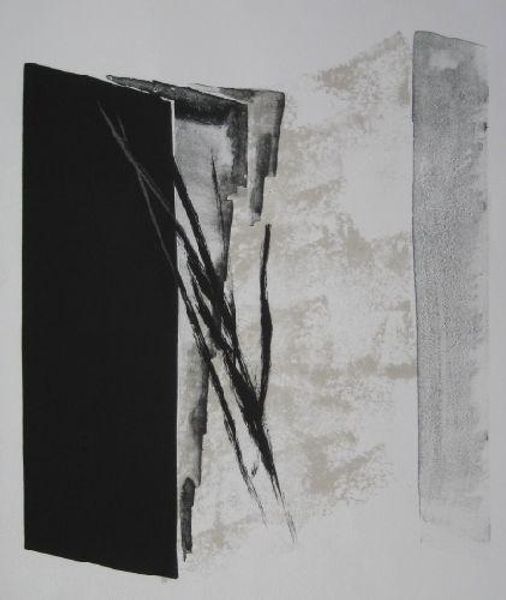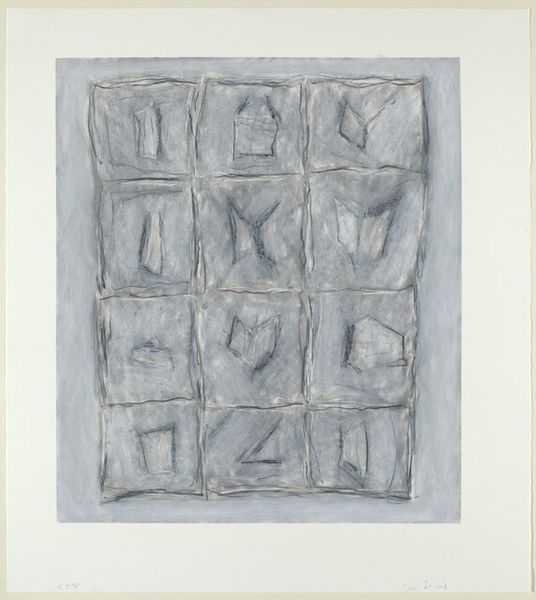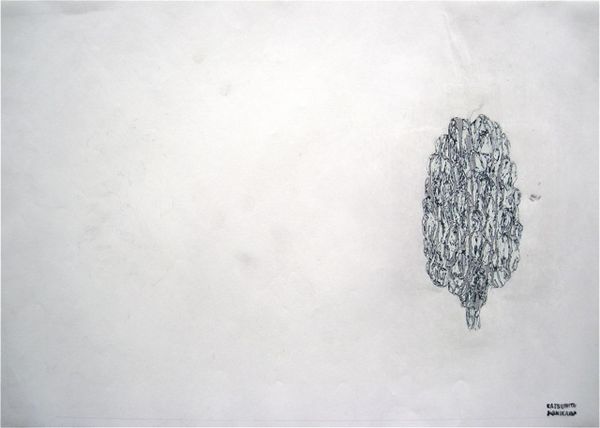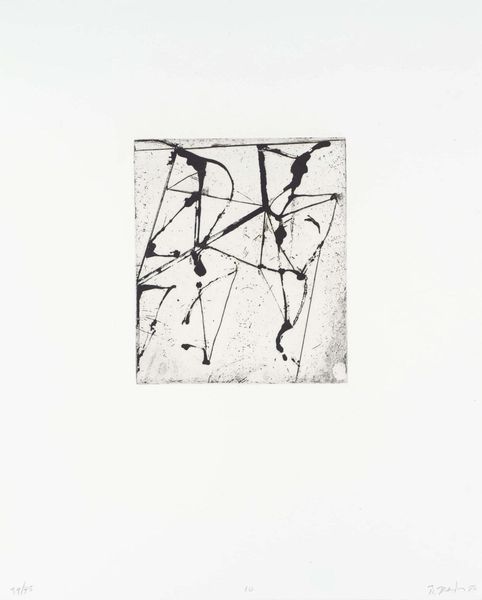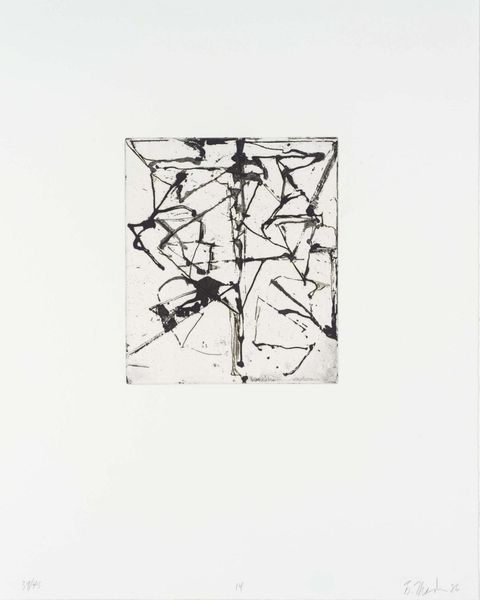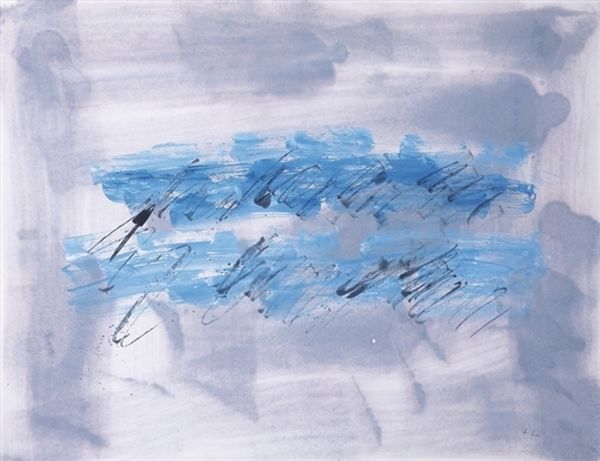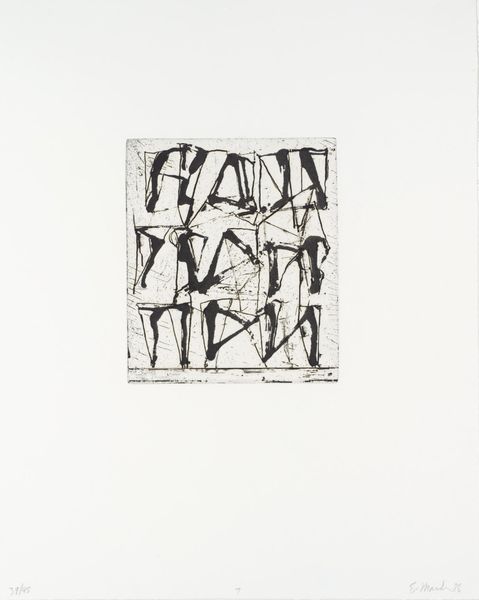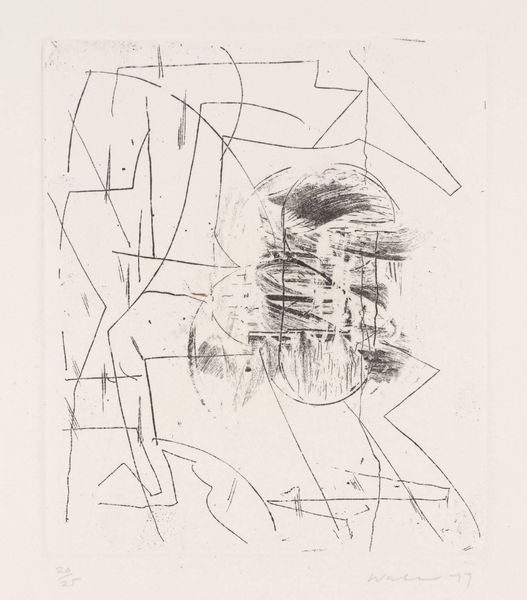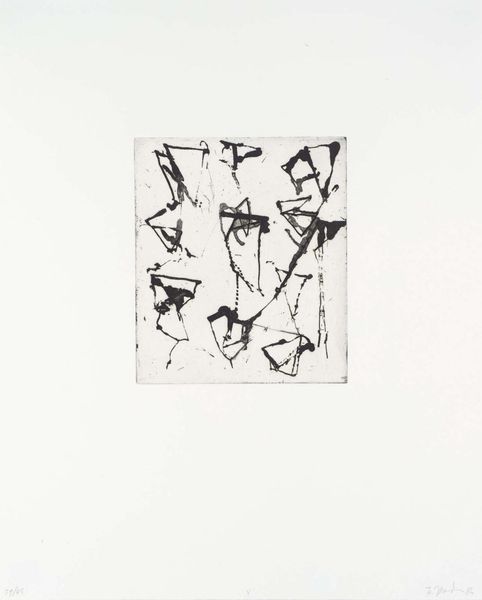
Dimensions: unconfirmed: 3000 x 3185 mm
Copyright: © Ian McKeever | CC-BY-NC-ND 4.0 DEED, Photo: Tate
Editor: Ian McKeever’s “Hartgrove Painting No. 2” is a large, mostly white canvas with these blurry dark shapes underneath a kind of grid. It feels very obscured. What do you see in this piece? Curator: I see a commentary on the act of viewing itself. Consider the period in which McKeever was working; abstraction was heavily questioned. Is he obscuring something, or revealing the constructed nature of how we see art and landscape through memory? Editor: So, the painting is less about a specific landscape and more about how we remember or misremember places? Curator: Precisely. Think about how museums frame our understanding, often presenting a sanitized, incomplete picture. The "Hartgrove" series, I think, hints at this manipulation. Editor: That's a perspective I hadn't considered. It makes the painting much more engaging, knowing it questions its own presentation. Curator: Indeed, it prompts us to be more critical viewers, both of art and the institutions that present it.
Comments
tate 6 months ago
⋮
http://www.tate.org.uk/art/artworks/mckeever-hartgrove-painting-no-2-t06883
Join the conversation
Join millions of artists and users on Artera today and experience the ultimate creative platform.
tate 6 months ago
⋮
McKeever's paintings are nearly always distilled from information and ideas which he gains on walks in remote areas of the world. These are written or drawn into notebooks to which he refers from time to time. McKeever works in series, refining ideas from painting to painting. The Hartgrove series is particularly concerned with the notion of threshold: the point at which two-dimensional becomes three-dimensional, when life becomes death, or whitish black becomes blackish white. The painting consists of delicate layers or veils of paint, suggesting the passage of time. It also evokes shadows cast by the windows of McKeever's studio. Hartgrove is the name of the village in Dorset where McKeever lives. Gallery label, September 2004
